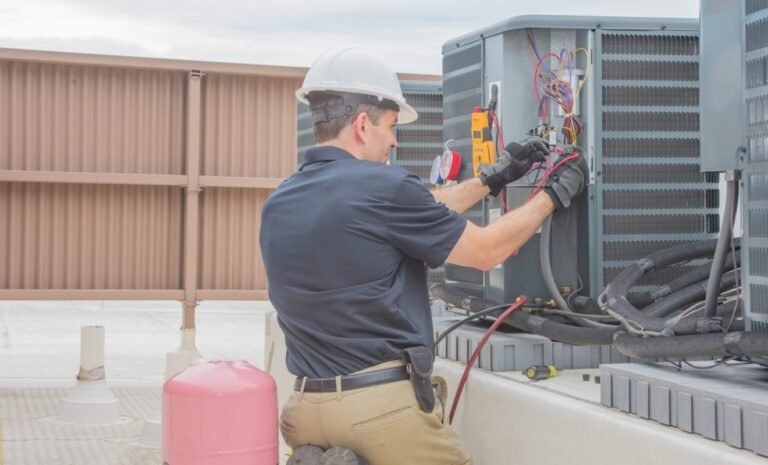India is a rapidly urbanizing nation with thousands of residential, commercial, and industrial buildings constructed each year. At the same time, countless older structures suffer from reduced performance due to age, overloading, and seismic risks. In this context, Carbon Fibre Column Strengthening has emerged as a reliable solution. It’s a modern repair method that enhances structural integrity without heavy demolition. Indian engineers and property owners now turn to this technique for safe, cost-effective, and long-lasting results.
The Growing Need for Retrofitting Solutions in India
Buildings across Indian cities are under constant pressure from urban density, changing usage, and environmental conditions. Many residential apartments, office complexes, and heritage structures now require reinforcement. Especially in earthquake-prone states like Himachal Pradesh and Uttarakhand, structural strengthening is no longer optional—it is essential. Carbon Fibre Column Strengthening offers a non-intrusive, technically superior solution that addresses these challenges. It aligns well with modern construction demands and helps preserve both aesthetics and safety.
What is Carbon Fibre Column Strengthening?
Carbon Fibre Column Strengthening is a technique where carbon fibre-reinforced polymers (CFRP) are wrapped around concrete columns. These wraps are bonded with epoxy or resin to improve load-carrying capacity and structural stability. Once applied, the column can bear greater vertical and lateral loads without increasing its size or altering the building layout. In Indian conditions, where space and time are limited, this method is especially effective. It combines strength, speed, and sustainability in one compact solution.
When Should Indian Buildings Consider Strengthening Columns?
There are multiple scenarios where Carbon Fibre Column Strengthening becomes necessary. It’s ideal for buildings showing signs of cracking, spalling, or corrosion. Structures being modified for additional floors or new equipment loads can also benefit. In many Indian metro cities, commercial buildings undergo functional changes, increasing stress on existing columns. Additionally, damage from natural calamities like earthquakes or floods requires immediate attention. In all these cases, this method proves efficient, timely, and highly durable.
How the Strengthening Process Works
The process of Carbon Fibre Column Strengthening follows a precise, well-monitored sequence:
-
Assessment – Structural engineers identify weak or overloaded columns.
-
Surface Preparation – The concrete is cleaned, and damaged areas are repaired.
-
Primer Application – A bonding agent is applied for better adhesion.
-
Fibre Wrapping – Carbon fibre sheets are wrapped around the column in layers.
-
Curing and Finishing – The wrap is allowed to harden, forming a composite layer.
This systematic approach ensures structural reliability and consistent performance across different types of buildings in India.
Advantages Tailored to Indian Construction Challenges
In Indian settings, buildings are often constructed in compact spaces with minimal downtime. That’s where Carbon Fibre Column Strengthening shines. It adds reinforcement without increasing column dimensions, maintaining usable floor area. It’s lightweight and corrosion-resistant, perfect for India’s coastal and humid regions. Additionally, installation is faster than conventional methods like steel jacketing. This means fewer disruptions for occupants. Overall, it’s a dependable method that accommodates India’s unique architectural and environmental conditions.
Cost-Effectiveness in Indian Retrofitting Projects
Initially, Carbon Fibre Column Strengthening may seem like a premium option. But its long-term cost benefits far outweigh the upfront investment. It reduces the need for repetitive repairs and prolongs the structure’s lifespan. Many Indian developers in cities like Bengaluru and Pune now include this method in maintenance strategies. Fewer material requirements, reduced labor hours, and lower maintenance costs make it highly economical. For building owners seeking value-driven solutions, this method is well worth the investment.
Real-World Applications Across Indian Cities
From residential societies in Delhi to public hospitals in Hyderabad, Carbon Fibre Column Strengthening has been used extensively. In Gujarat, buildings damaged during earthquakes were quickly restored using this technique. In Chennai, flood-prone structures used it to counter corrosion-related weakening. Even in educational institutions and commercial hubs, this strengthening method helps meet current load demands. These real-life examples demonstrate its adaptability and relevance across a broad range of Indian infrastructure needs.
Environmentally Responsible Structural Repair
Sustainability is a growing concern across India’s construction industry. Demolishing and rebuilding old structures creates significant debris and pollution. However, Carbon Fibre Column Strengthening allows buildings to be reused and reinforced, reducing environmental impact. It requires fewer raw materials, generates less waste, and conserves energy. As India focuses more on green building certifications and eco-friendly practices, this method supports national and local sustainability goals without compromising on safety or performance.
Integration with Other Strengthening Techniques
In many Indian repair projects, Carbon Fibre Column Strengthening is used in combination with other retrofitting methods. For example, slab reinforcement or beam wrapping may also be performed using carbon fibre sheets. In heritage structures, lightweight wraps are preferred to preserve aesthetics while enhancing strength. Engineers may combine this with steel bracing or grouting techniques, depending on structural demands. This flexibility allows for customized repair strategies, making it ideal for complex Indian construction scenarios.
Government Support and National Standards
India’s structural codes and policies increasingly recognize the importance of advanced repair technologies. Standards such as IS 15988 and provisions under the National Building Code encourage the use of fibre-reinforced materials. Many government bodies now include Carbon Fibre Column Strengthening in tenders for bridges, schools, and public buildings. With growing regulatory support and awareness, adoption rates are climbing. This trend reflects a positive shift toward more durable and safer infrastructure solutions across India.
Training and Skilled Manpower Availability
One of the main requirements for successful application is skilled execution. Fortunately, India is witnessing a surge in trained civil engineers and technicians specializing in fibre wrapping techniques. Leading construction firms now offer specialized training to ensure correct installation. Technical institutes and industry workshops provide certifications to promote quality workmanship. As a result, more cities—from Tier 1 to Tier 3—now have access to qualified manpower for Carbon Fibre Column Strengthening.
Common Misconceptions Among Indian Building Owners
Despite its proven benefits, some misconceptions hinder wider use of Carbon Fibre Column Strengthening. Many believe it’s too expensive or only useful for large commercial projects. Others worry about long-term performance or aesthetic impact. In truth, it’s suitable for a wide range of applications, including residential and small-scale buildings. The wrap can be plastered or painted to blend seamlessly. Educating property owners and builders about these realities is vital for broader acceptance across India.
Selecting the Best Carbon Fibre Column Strengthening Services
For those searching for the best carbon fibre column strengthening solutions, selecting the right service provider is crucial. Look for certified engineers, proven project experience, and strict adherence to Indian standards. A good service provider will offer end-to-end support—from structural assessment and design to installation and performance evaluation. Quality materials, attention to detail, and timely delivery should also be prioritized. The success of the project depends heavily on the expertise of the implementation team.
Future Outlook: Strengthening India’s Growth
As India continues to build new infrastructure and rehabilitate old ones, the demand for robust retrofitting methods will rise. Carbon Fibre Column Strengthening offers the perfect balance of speed, strength, and sustainability. With more engineers trained, better regulations, and increased awareness, this method is set to become mainstream. Its relevance extends beyond metros into smaller towns, where budget-conscious and time-sensitive repairs are equally critical. This is not just a trend—it is the future of structural repair.
A Smarter Way to Strengthen India’s Buildings
In conclusion, Carbon Fibre Column Strengthening offers a revolutionary method to enhance the load-bearing capacity of aging structures. It provides a safe, fast, and economical solution tailored for Indian construction challenges. From apartment complexes to hospitals, this technique is already reshaping how the country approaches retrofitting.



